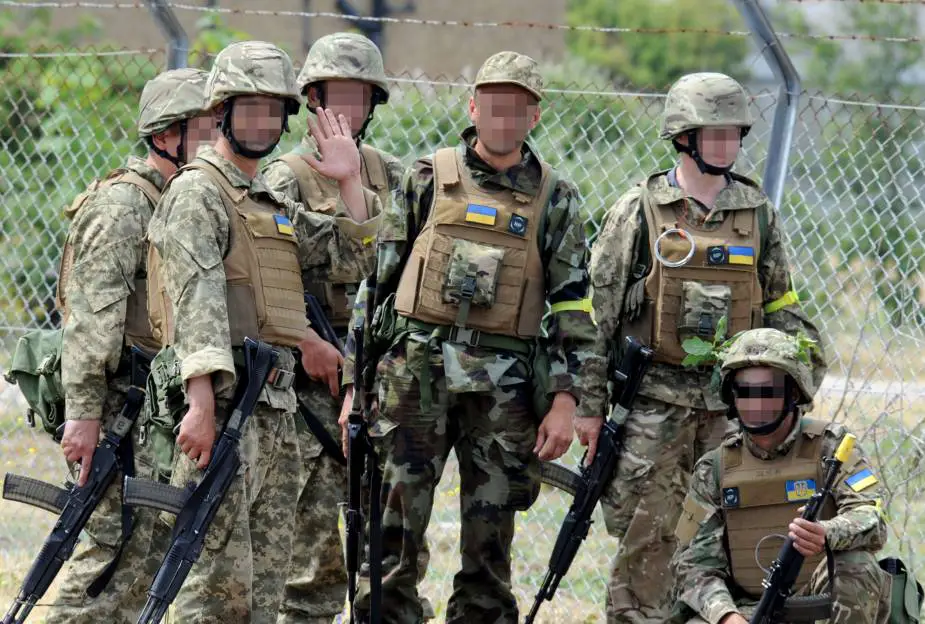Breaking news
UK Armed Forces training 37,000 Ukrainian recruits.
As reported by to Chris Fletcher, Senior Army Media Officer of the British Army, 26 June marked the first anniversary of the launch of Operation Interflex, the codename given to the UK Armed Forces’ training programme to develop and prepare Ukrainian recruits to take the fight to their country’s Russian invaders.
Follow Army Recognition on Google News at this link

A group of Ukrainian recruits take time out during their training shortly before they return to their homeland to take the fight to the Russian invaders (Picture source: British Army)
To date, some 17,000 Ukrainians have gone through the five-week training package and in the year 2023 to 2024 the UK is on track to deliver another 20,000. Hundreds of British military personnel including from the Army along with military personnel from Canada, New Zealand, Australia, Norway, Finland, Denmark, Sweden, Lithuania and The Netherlands have been committed to this operation at several locations across the UK.
One year ago, the first two tranches of recruits received a basic five-week training package; however, during the intervening 12 months the requirements have changed to the point whereby the recruits now remain in the UK receiving five weeks of intense training. The instructors are quick to point out the course’s content is very much intelligence lead and therefore continually being updated and developed according to the latest needs.
Of course, it would be wrong to make a direct comparison to the 14 weeks it takes to put a British Army soldier recruit through their basic training, known as the Common Military Syllabus. There is no need to teach these Ukrainians parade square drill, all the classroom-based educational aspects, qualities of a soldier etc. Interflex is solely about improving the survivability and increasing the lethality of people who only a matter of a couple of weeks previously may have been a butcher, a baker, or a computer game maker.
For all too obvious reasons, it would be irresponsible to divulge the specific content of the recruits’ training. They are taught battlefield casualty drills, the law of armed conflict and cyber warfare. They will spend a lot of time out in the training areas learning fieldcraft skills as well as some of the more key elements such as skill at arms and weapon handling, so they spend many hours on the ranges honing their accuracy skills. As you may imagine, given the prevalence of drones in this conflict the use of and counter-drone measures form an important module within their package.
Whilst the average age of the recruits coming through is 33-34 years old, a clear indicator these are people who had careers and professions before, some have been as young as 18 and as old as 59. Around 11% will have had some previous military experience be that a former serving person or someone with reserve service
A group of recruits in their last days of training at a location in the south-east of England went through a punishing combat fitness regime, under the ever-watchful eye and bellowing rage of a team of Royal Marines Commando instructors and conduct an urban assault operation through a purpose-built training village.
There is an old adage within the military, ‘Train hard and fight easy’, which with a large helping of irony can be attributed to the Russian General, Alexander Sumerov! What these recruits are to face is anything but easy. Their training was hard, bloody hard. With sweat dribbling down the grimacing faces of those clearly suffering the agonies of extreme physical endurance their Royal Marines Commando instructors were constantly beside them ‘encouraging’ them to push it one step further – and then another.
Defense News July 2023


























